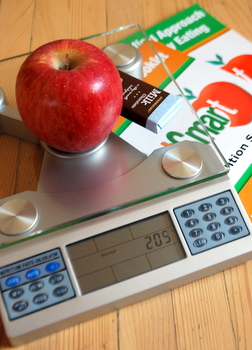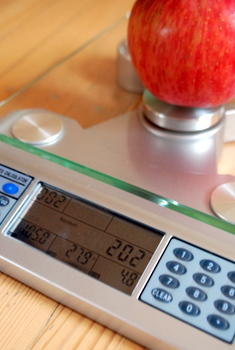
There are lots of good reasons to have a kitchen scale at home. The biggest reason is that they are far more accurate than just about any other means of measuring, especially when it comes to dry ingredients that are measured by cups for most US recipes. A cup full of flour can actually be two very different amounts, if one measure has been sifted and the other packed, even though they look alike. A basic scale will do - as long as it-s accurate, of course - but there are scales out there that offer many more features to the consumer, like the EatSmart Nutrition Scale.
The EatSmart Nutrition Scale is a kitchen scale that calculates nutritional information for hundreds of foods in addition to weighing them. It weighs in grams and ounces, and has a database of 999 preprogrammed food items for which it can give you the nutritional information according to the weight of the item on the scale. It gives you calories, carbs, fiber, sodium, potassium, magnesium, total fat, saturated fat, cholesterol, calcium, protein and vitamin K. You can also program in up to 99 additional items, if what you-re interested in isn-t already in the scale, to have those numbers available at the touch of a button. There is also a nutrition calculator mode to adjust the stats on a nutrition label to your portion size on the scale easily.
I found the scale to be accurate and easy to use. It was fun to see the nutritional information, too. The apple pictured below was 202 grams, contained 105 calories, 27.9 grams of carbs and 4.8 grams of fiber. While I-m not usually inclined to calculate the stats for everything I make, I really liked having such an easy option. I lent it to a friend who does weight watchers and she absolutely adored it. The only downside with this particular scale is that it only goes up to 6-lbs (3000gms), so if you do a lot of bulk bread baking or think that you-ll want it to weigh out large roasts, keep that in mind before you try one out.

No comments:
Post a Comment